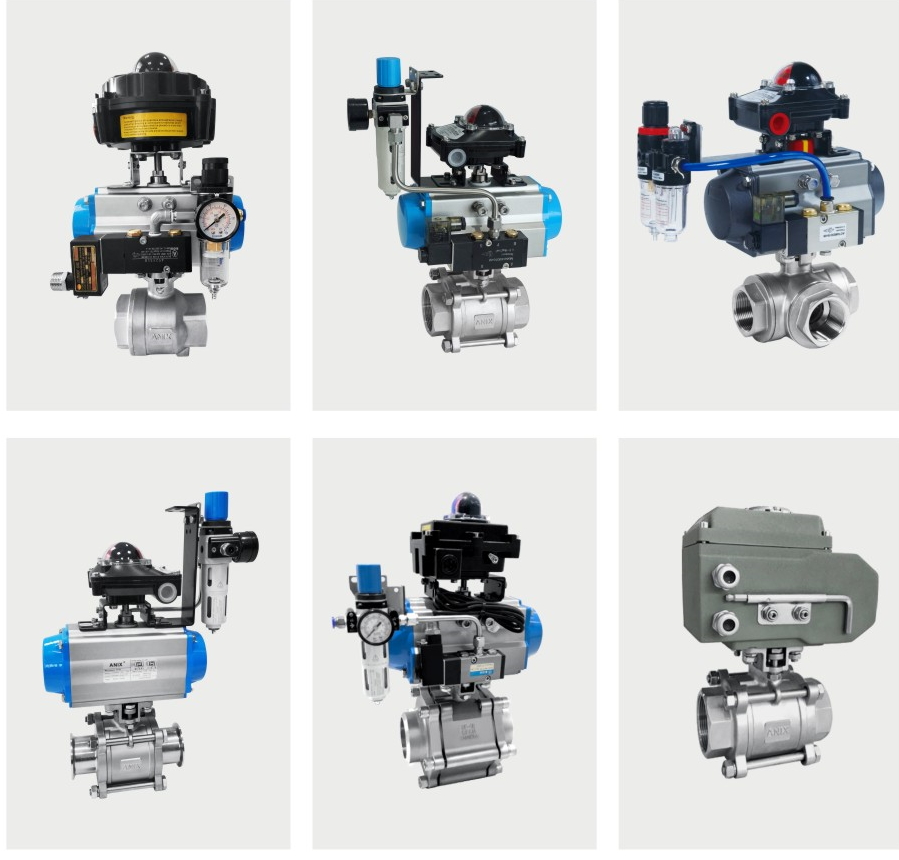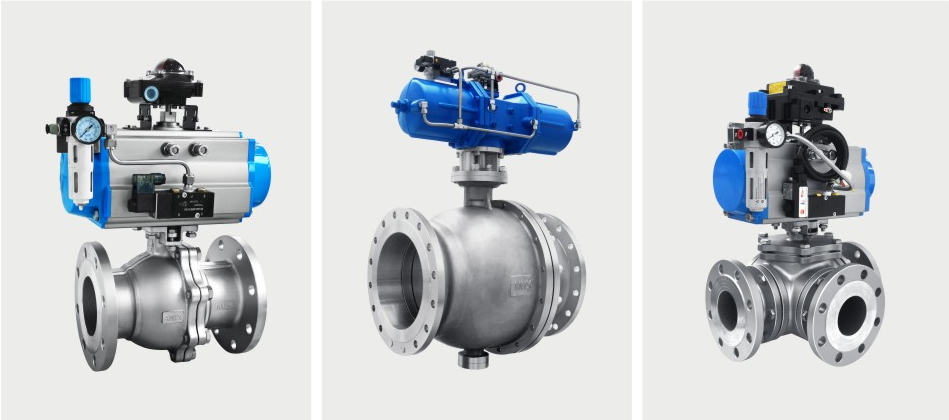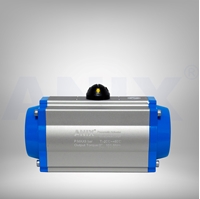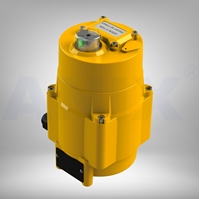Electric & Pneumatic Actuators
Actuator units are available for immediate delivery.
Fully Actuated Valve with accesories could be made available upon request with
one (1) to two (2) weeks lead time.


ANIX Pneumatic Actuator line of products manufactured and distributed by ANIX Valve USA are made for various sizes and type of valves with different torque values. There are double acting, single acting and spring return model with optional accessories and devices.
What is an actuator?
An actuator is a part of a machine responsible for the movement and control of a system or mechanism. It needs a control energy (a low power source or manual energy) and a source energy (electric current, hydraulic fluid or pneumatic pressure). When an actuator receives the control signal, it converts the source’s energy into mechanical motion. The 2 types of motion are rotary and linear. Rotary valve actuators produce the rotational motion needed to operate rotary valves such as ball, plug, and butterfly valves. While a linear actuator moves more in a straight line using a push and pull function so it can operate the valves such as the globe, gate, and pinch valves.
Manual valve actuators
Manual valve actuators are the most common type of actuator. They do not need an outside power. Instead, it uses a handwheel, chainwheel, lever, or a declutchable mechanism. They will turn the series of gears whose ratio results in a higher output torque compared to the input (manual) torque. There are 2 types of manual actuators that you can choose from: the basic lever, and hand wheels. The basic lever is the most common out of the 2 and are used on smaller valves. It is a long handle that attaches itself to the stem, so it can be rotated. Hand wheels are used for larger valves. Handwheels are connected to the stem either directly or through the gears, making it easier to open or close the valve.
Rotary pneumatic valve actuators
Rotary pneumatic valve actuators are used for automatic and or semi-automatic valve operation. It consists of a piston or a diaphragm which keeps the air in the upper portion of the cylinder, allowing air pressure to force the diaphragm or piston to move the valve stem or rotate the valve. Pressurized gas or air uses a compressor, a receiver or air vessel, air treatment devices, pipes and valves and the equipment to be regulated, such as grippers or cylinders. There are 2 main styles of rotary pneumatic actuators used on ball, butterfly and plug valves: rack-n-pinion and scotch-yoke. Both operate by converting the linear motion of a piston in a cylinder into rotational motion of the stem drive. The only difference besides how they look are its uses: rack-and-pinion actuator is for control purposes – because of its linearity, and the scotch-yoke actuator is for on-off applications due to its inability to hold intermediate positions. There is a 3rd uncommon type, vane. The piston is replaced by a vane, which is fixed to the stem drive. The vane is enclosed in a wedge shaped chamber where the stem center is located towards the point of that wedge. Air is forced into this chamber on either side of the vane in order to move it, thus rotating the stem drive.
Pneumatic Valve Actuators
Valve Actuator is mounted on the valves and moves the specific valve to a definite direction in response to a signal using an external power source. There are various types of valve actuators such as:
Manual Valve Actuator: These do not require an external power source. They use a lever for this purpose of driving gears.
Electric Actuator: These use a single phase or a three phase Alternate current or Direct Current motor. This is mainly used for the purpose of driving a series of gears to achieve the desired torque level.
Pneumatic Valve Actuator: These convert the air pressure to linear or rotary motion and change the position of the respective valve.
Hydraulic Actuator: These also convert the fluid pressure supply into linear or rotary motion and change the position of the valve to the desired level.
There are two main things which are to be taken into account while considering these actuators. These are the valve motion and the style of operation of these actuators. There are again types of motion valves such as the Rotary valve, Linear valves, etc. The operating styles of an actuator are also of two kinds like the motion valves. These are the specific devices that limit the motion of the actuator to desired levels. Some rotary devices move a right angle or through various angles according to desired levels. Valve Actuator has to possess some general specifications like voltage, supply pressure, the diameter of the stem of the valve, location type and mode, operating temperature while using the valve actuator, control signal type of input, etc. The devices that use alternate current or direct current are also easily available. Different fail safe methods are present for such actuators. In instances of power failure the devices can open or close the valves. Sometimes the locations in which these actuators are going to be used also play an important part in their make and composition. Potentially risky environment will call for a safety measure equipped actuator whilst other potentially safer places may call for usage of the more common kind of actuator.
Anix Pneumatic Actuator Catalog



